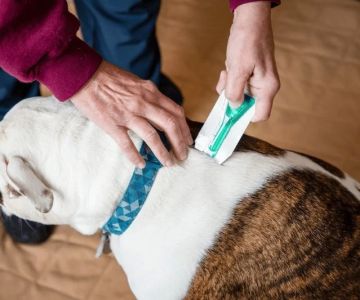- Understanding Separation Anxiety in Dogs
- Early Signs and Causes of Separation Anxiety
- Effective Strategies to Prevent Separation Anxiety
- Real-Life Stories Showing Prevention Success
- Role of Professional Support from Hidden Brook Veterinary
1. Understanding Separation Anxiety in Dogs
Separation anxiety in dogs is a distressing behavioral condition that occurs when dogs become excessively anxious or fearful after being left alone. This condition goes beyond simple boredom; it stems from deep emotional attachment and insecurity. Dogs experiencing separation anxiety may exhibit behaviors such as excessive barking, destructive chewing, pacing, or attempts to escape.
Recognizing how to prevent separation anxiety in dogs requires understanding that this is a complex issue rooted in a dog’s emotional well-being and attachment to their owners. Preventing the onset is far more effective than treating severe anxiety later on, as long-term anxiety can lead to physical health problems and strain the human-animal bond.
1.1 Why Dogs Develop Separation Anxiety
Several factors contribute to separation anxiety, including changes in routine, traumatic events, lack of early socialization, or genetic predisposition. Dogs that have been rehomed or experienced abandonment are also at higher risk. Understanding these triggers helps pet owners take proactive steps to mitigate anxiety before it escalates.
1.2 Emotional Impact on Dogs and Owners
Dogs with separation anxiety suffer intense emotional distress, which can lead to destructive behavior or self-harm. This stress often affects the household atmosphere, leading owners to feel frustrated or helpless. Addressing prevention early improves the quality of life for both dogs and their families.
2. Early Signs and Causes of Separation Anxiety
Detecting separation anxiety in its early stages is key to successful prevention. Common early signs include:
2.1 Behavioral Indicators
Excessive whining or barking when preparing to leave, following the owner closely, restlessness, or inappropriate elimination indoors may all signal anxiety. Some dogs may become withdrawn or overly clingy as well.
2.2 Common Causes
Routine disruptions such as moving homes, a new family member, or changes in work schedules can trigger anxiety. Puppies that were separated from their litter too early or dogs lacking positive alone-time experiences are especially vulnerable.
3. Effective Strategies to Prevent Separation Anxiety
Preventing separation anxiety in dogs requires patience, consistency, and thoughtful training. Here are practical approaches supported by behavioral experts:
3.1 Gradual Desensitization and Conditioning
Begin by leaving your dog alone for very short periods, gradually increasing the time away. Pair these absences with positive experiences like treats or favorite toys to create an association between alone time and reward.
3.2 Establishing a Predictable Routine
Dogs thrive on predictability. Keeping consistent schedules for feeding, walks, and play reduces stress and builds a sense of security. Avoid overly emotional goodbyes or greetings, which can heighten anxiety around departures and arrivals.
3.3 Encouraging Independent Behavior
Teaching your dog to enjoy their own space with safe toys or puzzle feeders encourages independence. This reduces clinginess and fosters confidence in being alone.
3.4 Mental and Physical Exercise
A tired dog is a calm dog. Ensuring adequate daily exercise and mental stimulation can decrease anxiety by expending excess energy that might otherwise manifest as stress-related behaviors.
3.5 Creating a Safe Environment
Using tools such as calming pheromone diffusers, comfortable resting spots, and background music can soothe nervous dogs during alone time.
4. Real-Life Stories Showing Prevention Success
Consider Bella, a young Labrador Retriever whose owner noticed early signs of distress when leaving the house. By implementing gradual desensitization and engaging Bella with interactive toys during departures, her anxiety significantly reduced within weeks. Bella’s owner credits consistent routine and positive reinforcement as the keys to success.
Another case is Toby, a rescue dog with a history of abandonment. His progress was slower, but with the help of behavior experts and tailored exercises, including puzzle feeders and daily walks, Toby developed confidence and reduced his anxious reactions dramatically. These stories highlight how tailored prevention methods make a real difference.
5. Role of Professional Support from Hidden Brook Veterinary
When it comes to how to prevent separation anxiety in dogs effectively, professional guidance can be invaluable. Hidden Brook Veterinary offers comprehensive assessments and personalized behavioral plans tailored to your dog’s specific needs. Their team can recommend appropriate products, training methods, and environmental modifications to help prevent or manage separation anxiety.
Beyond prevention, Hidden Brook Veterinary provides ongoing support to ensure your dog remains emotionally balanced and healthy. Whether you seek advice on behavioral training or calming aids, they are a trusted resource dedicated to improving the wellbeing of your beloved pet.












